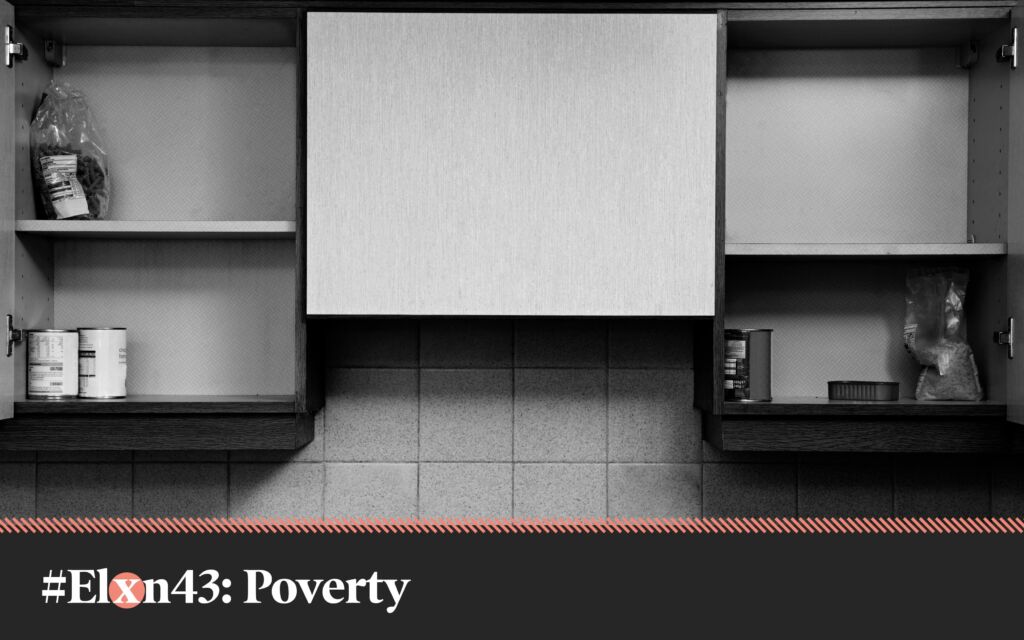What a difference a few years make. Tackling poverty and inequality were key themes in the 2015 election. This year, they have been muscled out by talk of affordability and tax cuts. International Day for the Eradication of Poverty is an excellent opportunity to take stock of where we are – and what’s being proposed by the different parties to move the anti-poverty agenda forward.
Several headline economic indicators suggest the economy is doing well, but a closer examination reveals uneven progress across the country between different communities and different groups of people.
Year-over-year growth in hourly wages and weekly earnings since the 2008-09 recession have been modest to say the least, some years barely keeping pace with inflation. Between 2009 and 2018, the cost of living (as measured by the consumer price index) has gone up by 16.6% while average wages only eked out a 5% increase. And this hides the real and persistent wage gaps between women and men, recent immigrants and Canadian-born, and Indigenous and non-Indigenous peoples.
This is only one marker, but it’s a telling one because it helps explain why pocketbook issues such as housing costs are top of mind this election.
The disconnect between low wages growth and the cost of living also highlights the failure of recent policies and investments to turn the tide on decades of neoliberal economic policy and the damaging rise of inequality and stubbornly high levels of poverty that have followed in its wake.
The richest one per cent of families still hold 17% of the country’s net wealth and the growth in incomes of top earners continues to outpace all others. By contrast, the incomes of Canada’s poorest citizens, those on social assistance, have languished for more than 25 years. No matter how you measure it, millions of Canadians are struggling on the margins, homelessness persists, children are going to school hungry.
Poverty elimination: What’s on offer?
When Canadians head to the polls next week, they should ask themselves how Canada’s political parties will tackle inequality and poverty. How will they bridge the divide between good jobs and bad jobs in Canada’s labour market? What will they do to empower and support low-income individuals and families? How will they get affordable housing built and ensure access to quality public services?
Liberal Party
The Liberal Party is proposing to build on the measures introduced over the last four years to meet the poverty reduction targets set out in its Poverty Reduction Strategy, now enshrined in legislation, to reduce levels of poverty by 20% by 2020 and by 50% by 2030.
The Liberals are promising, if elected, to raise the basic personal exemption to $15,000 (from $13,091) in 2023, and to boost Old Age Security at age 75 by 10% and the Canada Pension Plan survivor’s benefit by 25% for widows and widowers. They estimate that these two measures will lift 60,000 people out of poverty.
The party is also proposing to increase the Canada Child Benefit by 15% for children under one and to double the Child Disability Benefit, providing an extra $2,800 per year to an estimated 150,000 children.
On the job front, the Liberal Party is promising to raise the minimum wage in federally regulated industries to $15/hour, indexing it to inflation starting in 2020, and to introduce a new Career Insurance Benefit under the Employment Insurance program to help workers transition to a new job following the loss of long-term work.
They are promising to take “critical next steps” towards a universal pharmacare program — but there are no program details or dollars attached. Proposed housing programs are focused on home owners and, as such, miss out on the needs of renters.
By contrast, the proposed expansion of child care will assist low-income families, helping parents and mothers in particular, balance care and paid work. Ten per cent of proposed new before- and after-school spaces will be set aside to meet the needs of parents working overtime or irregular hours. The platform also promises to lower fees by 10% across the country.
Altogether, new child care proposals would cost $535 million each year starting in 2020-21, resulting in an additional investment of $4.3 billion by 2027-28, yet considerably short of what is needed to create a system that serves all children.
New Democratic Party
Child care is a key plank in the NDP’s platform. The NDP would commit $1 billion to affordable, not-for-profit child care in 2020 and increase it annually, to create 500,000 new spaces over the next four years. The party’s goal is to cap the cost of child care at around $10 per day by 2030 — a goal that would have a sizeable impact on rates of child poverty as evidence from Quebec child care program shows.
The NDP is also proposing to build 500,000 affordable housing units over the next 10 years, starting with $5 billion in additional funding in the first year and a half of an NDP government. As well, the party is planning a $5,000 rental subsidy for those struggling to pay their rent and a $15 / hour minimum wage for federal industries.
The party would cancel interest on all existing and future student loans — considerably lightening the financial stress postsecondary students face — and expand the funds available under the Canada Student Grants program. Their stated goal is to work with the provinces and territories to provide free college and university tuition.
The NDP would take action immediately to establish a universal pharmacare program and free dental care for households making under $70,000 per year. They would also work collaboratively to launch a basic income pilot project, in addition to continuing Ontario’s program, to gather information about this approach to reducing economic precarity.
The proposed increase in revenues starting in 2020-21 would be “historic in magnitude” resulting from an increase in corporate income taxes of three percentage points, a rollback in capital gains inclusion rate from 50% to 75%; measures to restrict the use of tax havens; and new taxes related to wealth, digital services, and an increase in the top marginal personal income tax rate by two points to 35%.
Green Party
The centrepiece of the Green Party’s anti-poverty strategy would be a new universal Guaranteed Livable Income (GLI) program to replace the current array of income supports, such as disability payments, social assistance, and income supplements for seniors. Payment would be set at a “livable” level for different regions of the country. Those earning above a certain total income would pay the GLI back in taxes.
The Greens’ platform also pledges to boost investment in the new Canada Housing Benefit for renters and restore tax incentives to encourage the construction of rental housing. The Greens would take action to build a universal child care system and a universal pharmacare program, while expanding national health care coverage to include free dental care for low-income Canadians. A Green government would forgive existing student debt and take steps to immediately eliminate tuition for postsecondary education.
Conservative Party
The Conservative Party offers a range of targeted measures to assist middle-income families with selected expenses such as children’s arts programming and saving for postsecondary education. The platform includes a promise to increase the Age Tax Credit by $1,000 — a nonrefundable tax credit available to low- and middle-income seniors. This would result in a savings of up to $150 per year for people with incomes of $37,800 or less.
A proposed “universal tax cut” will reduce the rate of the lowest federal income tax bracket from 15% to 13.75% over a three-year period. This represents average savings in taxes of roughly $370 per year, at a total cost of roughly $6 billion in foregone tax revenues. According to an analysis from David Macdonald, this measure delivers the largest gains to high-income Canadians. A little under half of tax-filers (46%) will see no benefit from this new policy.
The Conservative Party has promised to sustain federal-provincial-territorial transfers at current funding targets (increasing by no more than 3% annually). There are no specific measures to build or enhance key public services such as child care, health services or housing.
Canada’s choice on poverty reduction
There are several important policy proposals on offer, reflecting distinct positions on the reasons behind entrenched inequality and poverty and the approaches needed to address it.
On the one hand, the Conservative Party is offering a very expensive broad-based tax cut that will deliver no benefit to those most in need. This approach, like their “cash for care” or RESP proposals, is reflective of a “hands-off” private responsibility approach to social policy, offering up the greatest value to families at the top of the income scale who are best positioned to take full advantage of these tax-funded opportunities.
This type of strategy is another form of privatization—leaving families to cope on their own with illness, job losses and caring responsibilities—all at huge individual expense. More generally, the drive to reduce taxes undercuts the ability of government to raise needed revenues to deliver high-quality services and supports fundamental to addressing the causes and consequences of rising economic inequality.
To truly close the gap and level the playing field, we need a comprehensive and coordinated action plan to end poverty for all Canadians and the resourcing to make it happen. Such a plan requires ambitious targets and timelines and greater investments in our social safety net and essential services such as those proposed by the New Democrats and the Greens. The Liberal Party’s platform identifies key steps — but lacks the scope and ambition needed to make meaningful change in the near term.
With a stronger, more equitable fiscal foundation, Canada will be in a much better position to tackle economic, social and environmental challenges head-on, while investments in housing, child care and income security will ensure that all benefit from shared prosperity.
The CCPA has done extensive research and analysis on a wide range of federal policy issues, most notably through our annual Alternative Federal Budget. As we head towards the October 2019 federal election, we’ll be sharing our independent, non-partisan analysis and fact-checking of campaign promises and platforms from all the major parties.







